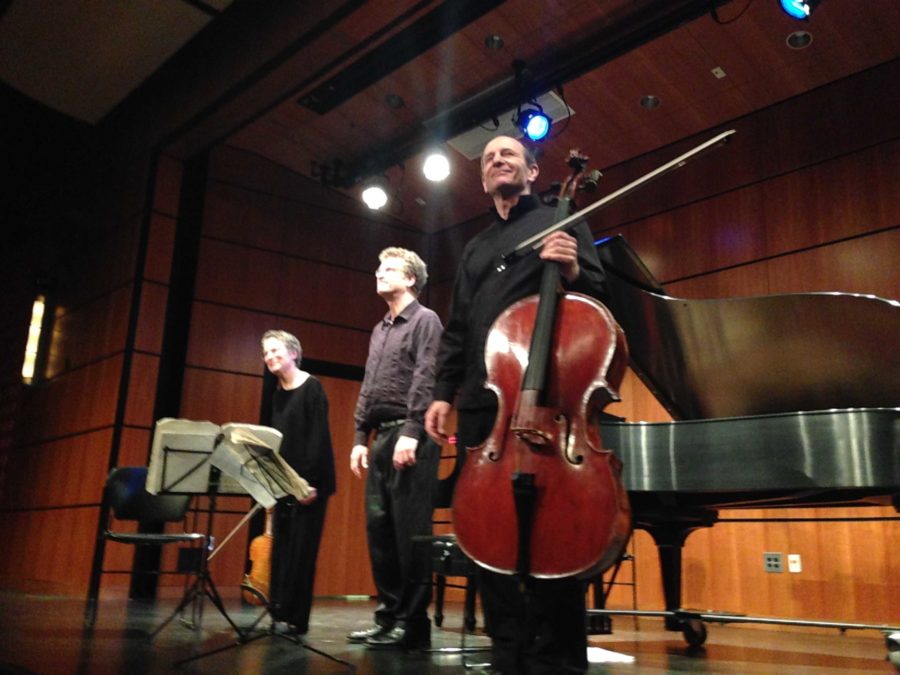The Gramercy Trio set a high standard as the Santa Rosa Junior College Chamber Concert Series kicked off Oct.11in Petaluma.
Ellis Auditorium: Three-quarters full of distinguished patrons who murmur amongst themselves, the doors close and the murmur diminishes, till only the notes of past performances linger in the air. SRJC music teacher and master of ceremonies Nick Xenelis greets and introduces the night’s featured performers to the audience.
The Gramercy Trio from Boston, dressed in casual, black attire takes center stage under the soft blue lights. Two of the three members carry a well-worn violin and cello. The tallest of them, Randal Hodgkinson, sits at the piano while Xenelis sits to the side of the piano and flips sheet music for him.
The trio tunes a few notes and delivers Beethoven’s Piano Trio Op 97 “Archduke” without fanfare. The rich tones of the piano trundle through the auditorium followed shortly by the playful voices of violin and cello.
The precise technique, tone and interplay displayed by the three musicians is impressive. The piano provides the bulk of the main focus, while the violinist saws frantically at her shoulder and the cellist’s left hand flutters wildly over his strings.
Some uninitiated audience members are moved to applaud enthusiastically in between the movements. Four movements and 40 minutes later, the piece ends with applause from the entire audience, many of whom are themselves musicians, as Xenelis noted earlier.
During the intermission an audience member wins the drawing for the “Shadow Bands” CD featuring the Gramercy Trio.
After intermission, violinist Sharan Leventhal, addresses the audience with enthusiasm, giving background on the commissioned piece, “Piano Trio No.3″ (2012) by Gunther Schuller. It is a wild and complex trio with many Latin and jazz influences. “The last movement is a real barn burner,” Leventhal said.
While not as long as the Beethoven piece, it is a magic carpet of inspirational music that encourages imagery with its edgy rhythms. Vibrant playing, deftly handled changes in tempo and solid reoccurring melody make this piece a toe-tapper that has audience members bobbing their heads.
The final piece of the evening, “Trio for violin, cello and piano,” by Ravel (1914) is, “an exquisite piece of craftsmanship,” said Leventhal. The piece has characteristics and tempo in common with Schuller’s piece, although Ravel’s is more conservative and proceeds without reckless abandon. Where Schuller has edgy tension, Ravel uses elegance and decorum. Ravel’s “Trio” looks especially challenging for cellist Jonathan Miller during the second movement as his high energy performance rocked him out of his seat, bow sawing savagely on the strings in the passionate atmosphere the trio created.
The evening ends, half the audience is moved to a standing ovation for the Gramercy Trio.
The Chamber Concert Series, with five performances remaining from world class artists, is a three-decade tradition at SRJC for the enrichment and enjoyment of those in attendance.
As always, never be the first to clap, and only after a three beat pause.


